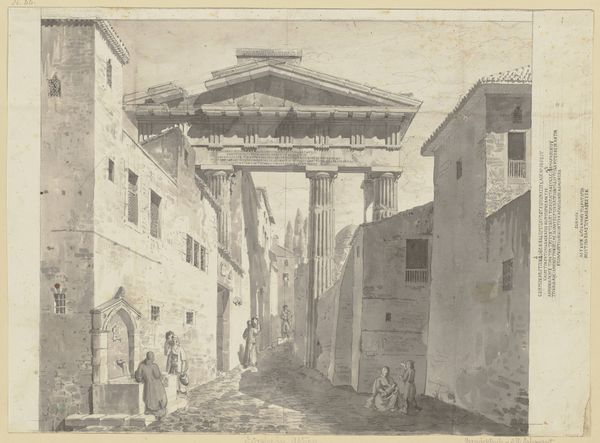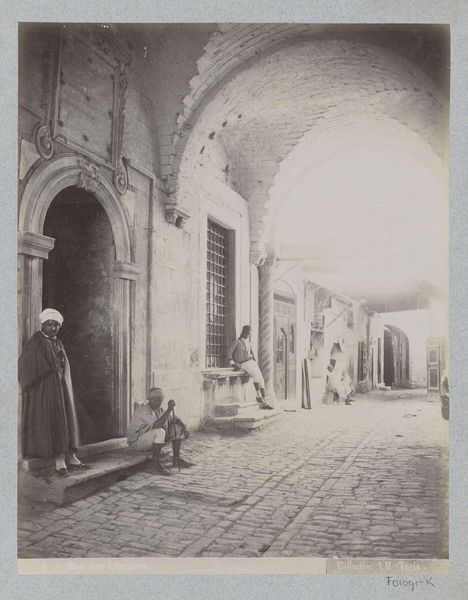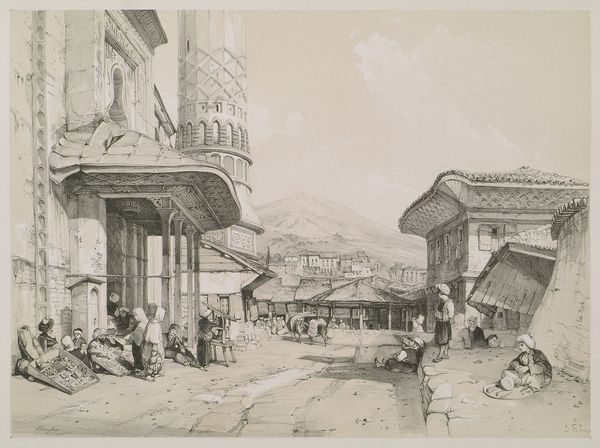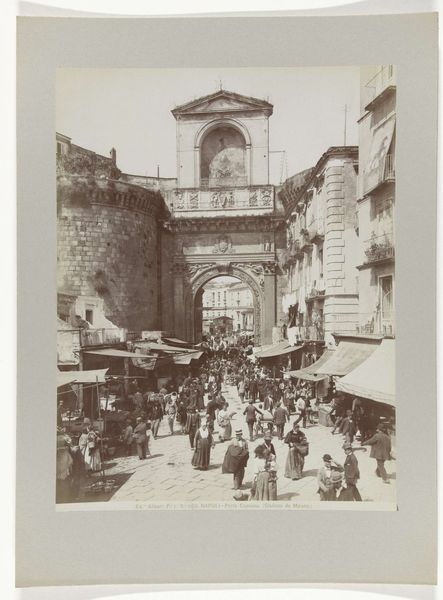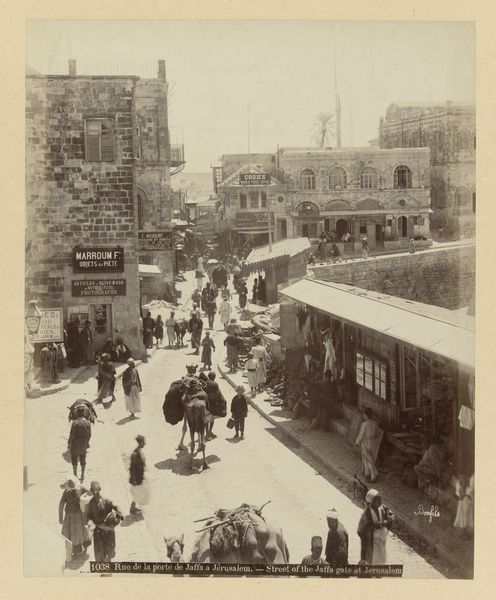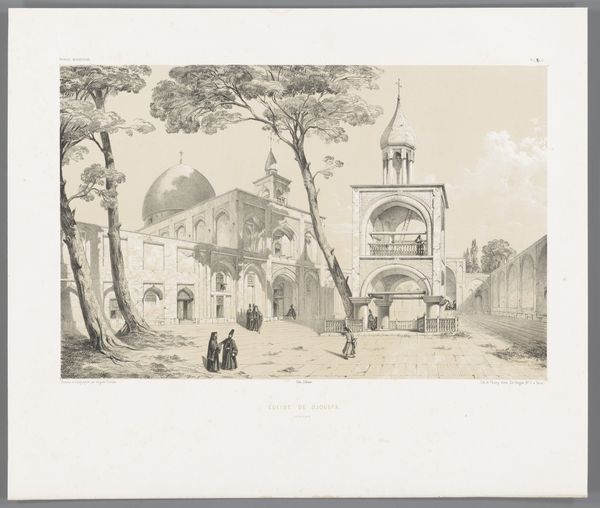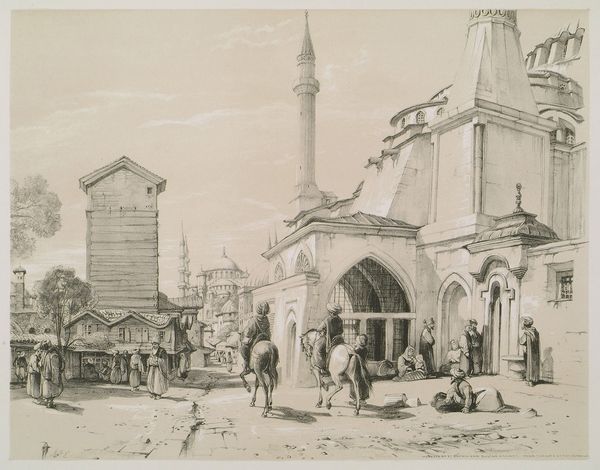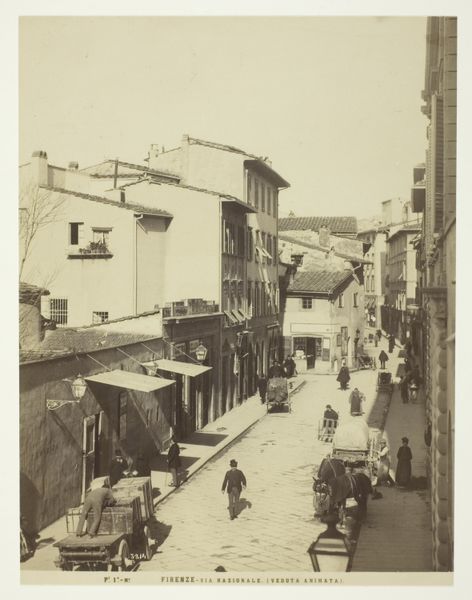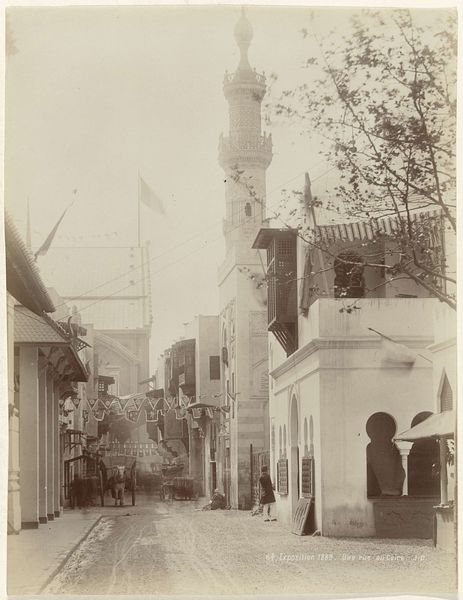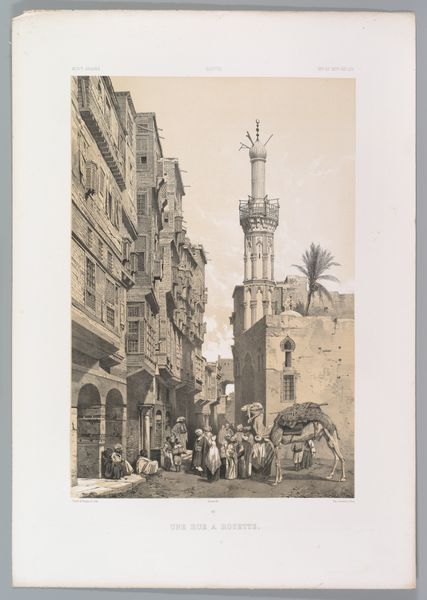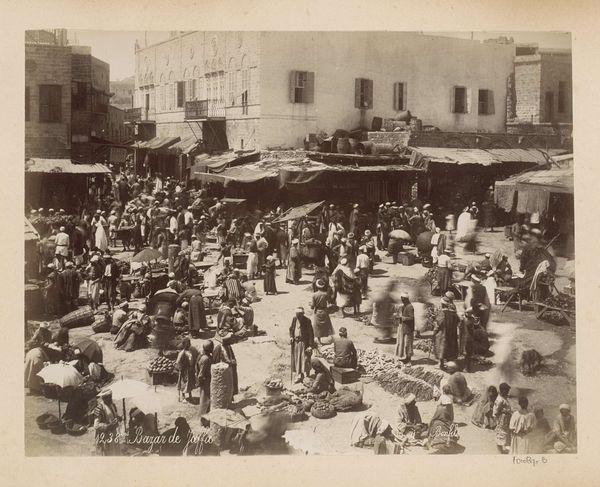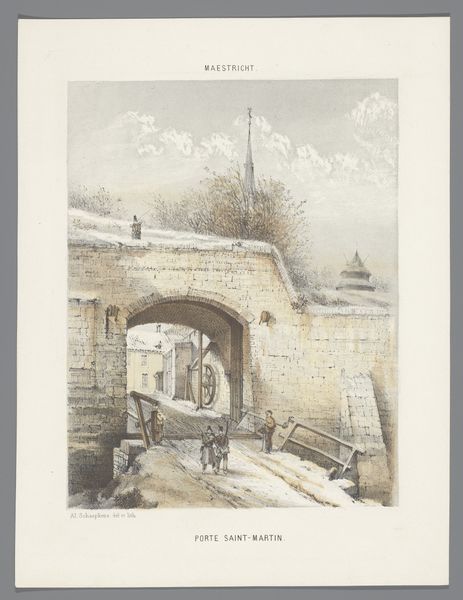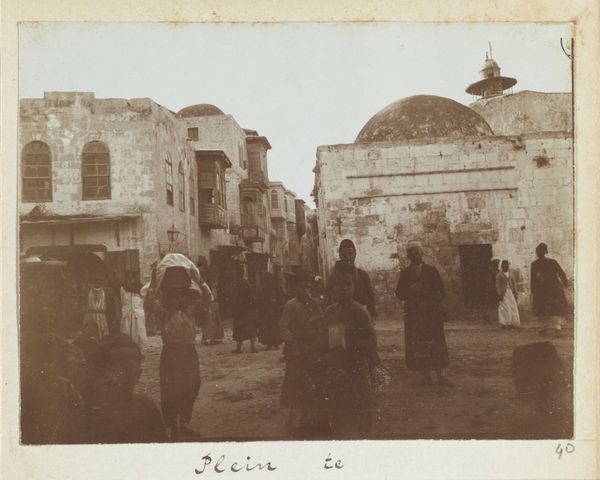
drawing, paper, ink, pencil
#
drawing
#
pencil sketch
#
paper
#
ink
#
sketch
#
pen-ink sketch
#
pencil
#
orientalism
#
cityscape
#
islamic-art
#
watercolour illustration
#
genre-painting
#
watercolor
Copyright: Public domain
Curator: Here we have John Frederick Lewis' "El Pek Khan, (silk Mart), Brussa," created in 1838. The artwork utilizes pencil, ink, and watercolor on paper. What impressions does this piece evoke for you? Editor: It feels so still and sun-drenched, almost dreamlike. The sketch-like quality makes it intimate, as though we’re peeking into a private moment. I can almost feel the heat rising from the stones of that courtyard. Curator: Absolutely, the stillness is quite remarkable. The bazaar, as a location, represents a place of intense human interaction and exchange. Lewis, steeped in the Orientalist aesthetic, seems to present the scene almost like a tableau. What symbols resonate with you in this work? Editor: The seated figures and the central tree act as focal points. This evokes ideas around community gathering spaces but viewed through a colonial gaze. We have to remember these images reinforced certain power structures, setting the "exotic" Orient in opposition to the Western observer. Curator: Indeed. The interplay between shadow and light reinforces a symbolic meaning, too. This might speak to the contrast between appearance and reality, or perhaps knowledge and mystery—recurring themes within the Orientalist vision. Editor: Also, the inclusion of a lone figure on horseback could reference military presence. Consider how this single element might disrupt the harmonious everyday life of the bazaar and remind viewers of political power structures in the region at that time. It is crucial to be mindful of how the picturesque can conceal a more troubling agenda. Curator: It raises essential questions of cultural representation. How might the local inhabitants of Brussa, now Bursa in Turkey, have perceived this representation of their daily life? There are elements of visual coding, of what the 'Orient' was expected to signify in the European imagination. Editor: Precisely! It is not only a visual record of a time and place but also an active participant in constructing meaning and perceptions of an entire region and its people. Curator: Well, this glimpse into the 'Silk Mart' offers layers of contemplation, prompting us to reflect on the intricate relationship between artistic expression, cultural narratives, and political realities. Editor: Exactly, I am leaving this discussion with a renewed awareness of art’s capability to shape our perception of cultural landscapes.
Comments
No comments
Be the first to comment and join the conversation on the ultimate creative platform.
